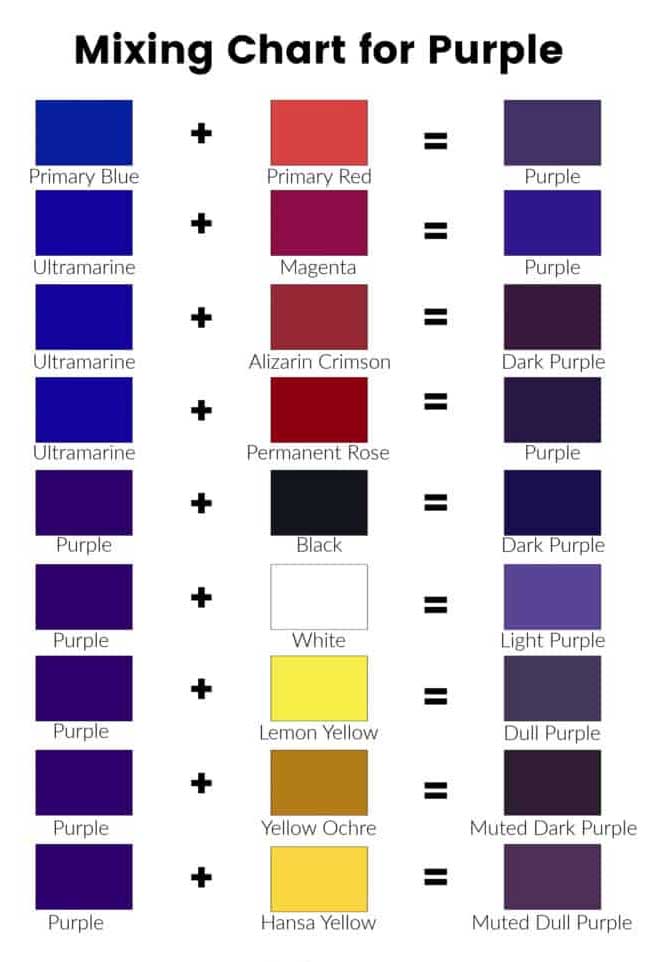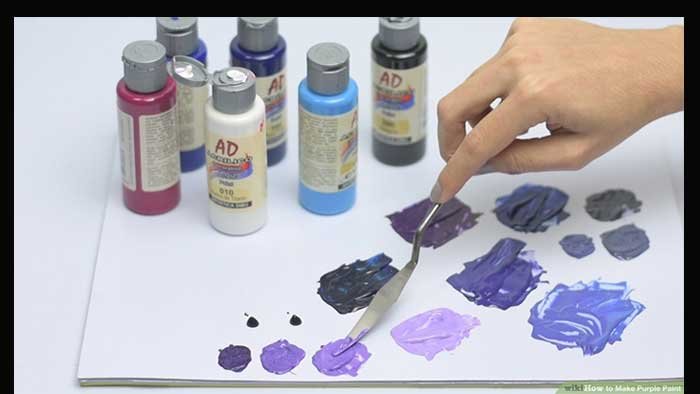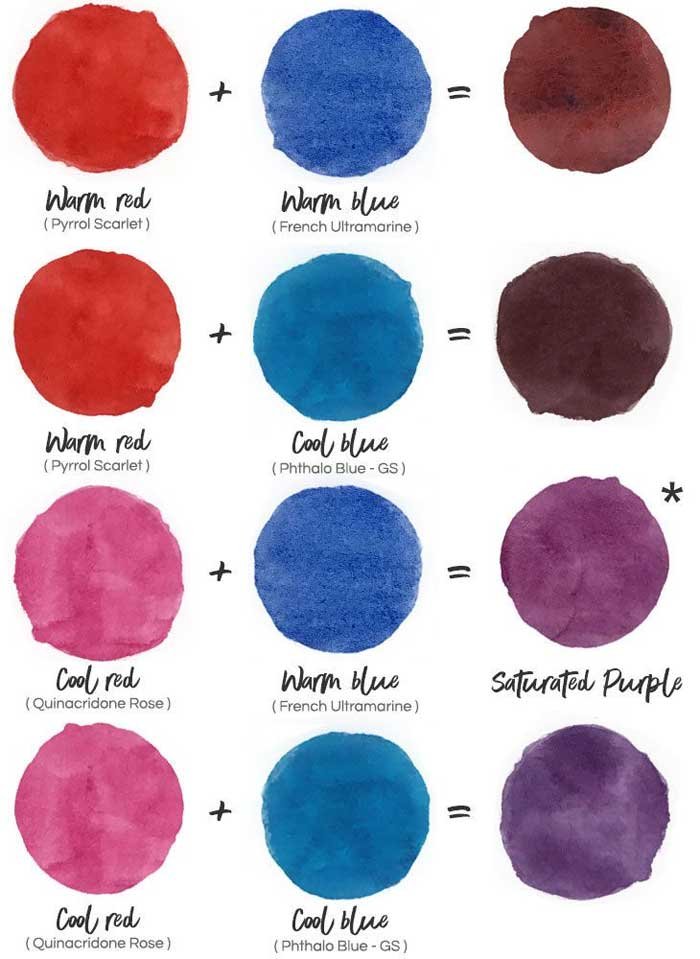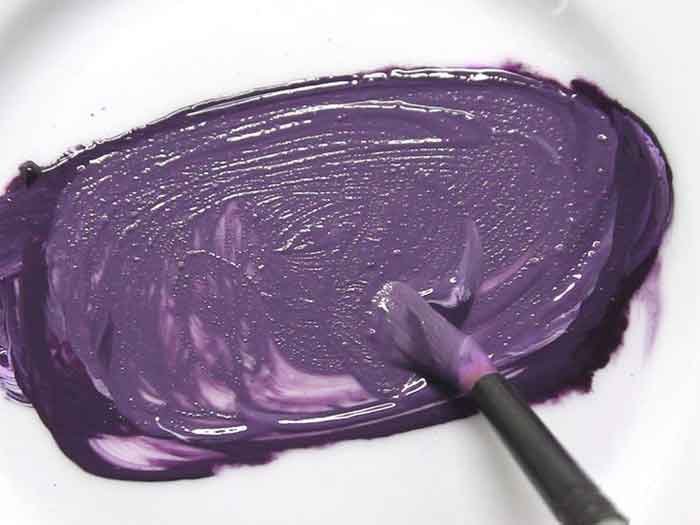Purple color is a wonderful color associated with glamour, beauty, and royalty. One can obtain this color by mixing blue and red colors in equal quantities.
While this process may look simple, it will require a lot of practice to get the correct shade.
The first step in making purple color is to mix equal amounts of blue and red colour paint. If you are using watercolor paints, we recommend using liquid watercolors.
Read further to know the proper ratio of blue and red colors that should be mixed to create purple.
Here we have also described how to make orange colour for your reference.
How is the Purple Color Created?
The color you get from combining blue and red is determined by how much each of these colors is used in your mix. Adding redder will create a darker purple while adding more blue will make it bluer.

The color purple can be created by mixing red and blue together. However, you may use other colors to produce a variety of purples. In general, the term “purple” refers to any color with a hue that falls between red and blue.
Have a look here at an attractive purple two colour combination for bedroom walls for your home in purple colour
However, achieving the correct shade of purple is more difficult than simply mixing these two hues. Understanding the science behind making purple colour paint can assist you in creating it on your own. 
Methods To Make Purple Color
When two or more light-reflecting objects are combined, the various ways they reflect light are also mixed.
Light waves combine the ways that these particles reflect light to produce more complex hues like purple.
Additive mixing and subtractive mixing are the two most common techniques for dyeing fabric using light.
Additive Mixing
Additive color mixing is employed in the manufacture of television, computer monitor, and disco lights, among other things.

In essence, additive mixing combines light wavelengths to generate colors by layering them on top of each other before combining them with a white substance.
Also read: modern two colour combination for living room if you want to repaint your living room.
Subtractive Mixing
Because certain wavelengths of light are absorbed rather than reflected as colored pigments are combined, this process is known as subtractive mixing. When red paint is combined with blue paint or dye, it combines various wavelengths of light. That hue derived from the reflection of light is known as purple! You can also make radium paint at home in purple shade.
Tints and Shades
Tints and shades are two types of coloring that can be done with purple. What, though, are tints and shades?
- A tint is created when white is added to another color. Because it is a combination of red and white, pink is a tint. As a result, by combining purple with white, you may produce a tint of purple! You should not neglect vastu for colors while painting your home/office to attract positive engeries.
- A shade is made by combining two colors. As a result, when you combine black with purple, you get a purple shade. The hue of a color is defined by the proportion of black or white added to it. The ratio of black to color is known as saturation. An overly saturated color contains little black or white, whereas one that has been desaturated consists of a lot of both.
Consider Reading: Pot painting ideas and easy bottle painting ideas to decorate your home with pots and bottles.
When you combine black and white, you get a color that has depth. The color wheel transforms into a color sphere, with colors looking like this: What hue is created when red and blue are mixed with black or white? You may produce many different sorts of purple by combining blue and red with black or white.
Tints and tones are used to create purple by mixing red, blue, and white to make lighter hues such as orchids. Purple is made by mixing red, blue, and black. Indigo hues will be deeper, darker colors. If you want to improve your color mixing abilities while working on an art project, combining tints and tones is an easy method to do so!
3 Tips for Making Purple
Do you have the technical knowledge to know what colors make purple and how they interact together? Are you ready to consider your hue of purple? After that, you may add in a different color like white, black, or gray if desired.
You’re prepared to get started now that you’ve decided on colors for purple! Check out our three top hints below to help you create the shade of purple you desire.
Before we move ahead you can also have a look at asian paints colour book combination with code to get the purple colour combination before painting.
1: Pick a Hue
Hue is the purity of a color. When we talk about color or the overall saturation of a hue without white or black, we’re talking about it in terms of its purity. The primary wavelength of a color determines its hue.
One of the major reasons why purple is so popular is due to its proximity to blue and red. The hue you obtain at the end of the process is entirely determined by the red and blue hues you begin with.
Try these living room paint color ideas for your home for modern look.
If you’re looking for a warmer tone of purple, use a more orange or yellow-toned red as your foundation color. Warm crimson has an orange or yellow overtone. Begin with a colder blue to obtain a colder purple.
2: Choose Between Darkness and Light
The value of a color refers to how light or dark it is. Darker values will be tinted black and are called shades. Lighter values will be tinted white and are called tints.
Adding white or black to a combination of red and blue will alter the value if you’re using purple. To create a darker purple, such as deep violet, add more black. This looks pretty when you go for modern texture paint designs done in the purple colour.
3: Adjust the Saturation
The “saturation” of a hue is its degree of saturation in comparison to the amount of white or black included. The less intense a color becomes, the more white or black is added. Because there’s a greater proportion of white to color, purple hues like mauve aren’t as rich.
You can get a brighter, more intense purple, an undesirable white, or even black if you want! Because there isn’t as much white or black in the mix, colors like heliotrope or royal purple have a greater saturation.
Have a look at exterior wall paint colour combination in purple and other colours as well here.
Conclusion
Now that you know what colors make purple, the process of creating your ideal shade should be much easier! Use our three top tips to get started: choose a hue, adjust the value, and play around with saturation.



I’ve always had a hard time getting certain colors just right when it comes to color mixing and this has certainly changed that! Thanks so much for sharing your tips!
I never realized how much depth and complexity you can get with just these three simple tips! The possibilities are endless! I’ve always loved purple but after reading this article, I have a newfound appreciation for it.
Purple color gives such a vibrant and bright look to any kind of object. The color purple is associated with royalty, nobility, luxury, power, and ambition. I got a lot of useful insights on how to match and get the perfect purple tone from paints. The details that you have shared in this article are really very practical and easy to follow. Thanks a lot for sharing this masterpiece with us.
Wow, I never thought about additive and subtractive mixing methods while making a color from paint. I think this technique is not only useful to create the desired shade of purple but also to produce any color in general. By adjusting the ratio of each color, you can create an infinite number of colors! It’s really amazing how such a simple change in technique can produce such drastic results. I’m definitely going to have to experiment with this more in the future. Thank you so much for sharing your knowledge!
Mix equal amounts of blue and red. Use additive and subtractive mixing. Pick a hue and adjust saturation.
During my art classes, I had a hard time making the colour purple. I have a Lucknow Chikenkari kurta which I am planning to colour purple. Thanks for your article, I have been introduced to the shade Saturated Purple, which I am absolutely in love with.